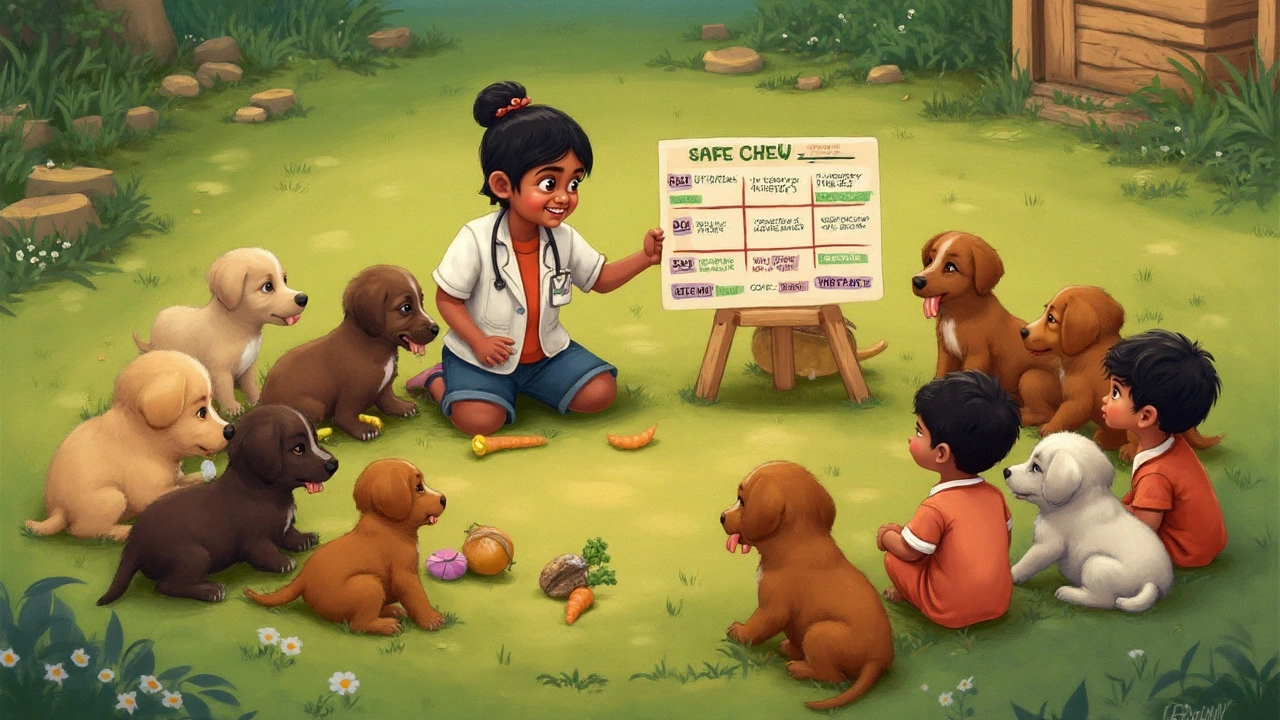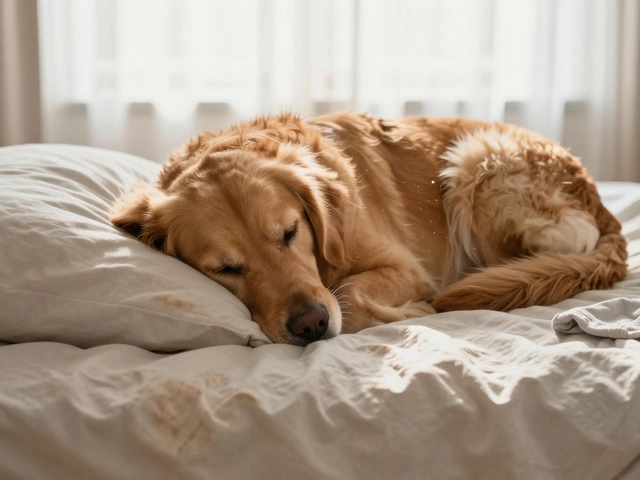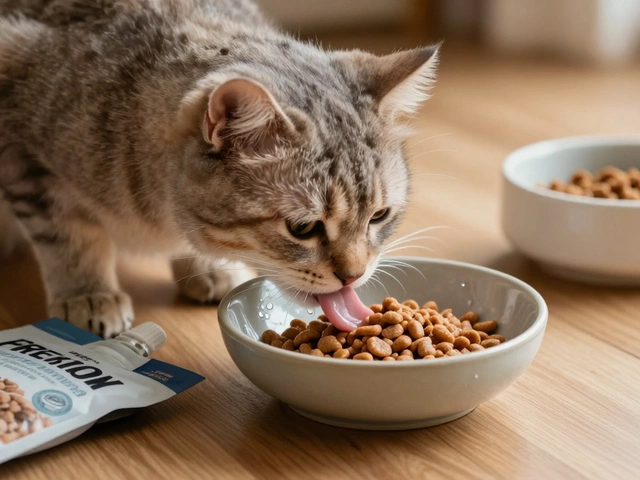
Bet you didn’t know a puppy’s baby teeth are razor sharp for a reason — nature’s way of making us yelp, hide our sneakers, and take “puppy-proofing” way more seriously. If you’ve felt the pain of surprising yourself by stepping on a gooey, half-mauled dog bone at 6 AM, you’re not alone. And don’t get me started on chewed charger cables. The question is, what should puppies chew on, and what do vets really recommend that keeps pups—and our favorite shoes—safe?
Why Puppies Need to Chew (It’s More Than You Think)
Chewing is hardwired into a puppy’s DNA. When those tiny teeth start poking through at three weeks old, you’ve got yourself a nippy, mouthy furball on your hands. But it’s not just about soothing teething pain. Chewing keeps a bored puppy busy. It’s also a huge way pups explore the world. Their mouths are like a toddler’s hands—only, well, slobbier. If they don’t get something safe to gnaw, your home quickly becomes a puppy buffet.
There’s actually science here: Teething peaks between 4 and 6 months old, when adult teeth push out the baby set. The pressure of chewing can ease gum soreness, much like a baby’s teether. According to the American Veterinary Medical Association, puppies may start chewing destructively when bored, anxious, or under-exercised. Chewing also cleans teeth naturally, scraping off some gunk and keeping the jaws strong.
Giving a puppy the right stuff to chew is the best hack for keeping them—and your house—happy. Otherwise, your dog’s going to improvise, and you probably won’t love their choices. (As in, your expensive headphones. Or your toes.)
What Vets Approve: Safe Puppy Chews and Toys
Not every dog toy on the pet store shelf deserves a spot in your home. Vets are picky for good reason. They want chew options that are non-toxic, tough (but not rock-hard), sized right for your puppy, and can’t splinter or break into risky chunks. So what makes the cut?
- Durable, soft rubber toys: Think KONG Puppy, Nylabone Puppy lines, or West Paw’s Zogoflex. These are bouncy and flexible—try stuffing them with a little peanut butter or plain Greek yogurt for bonus points.
- Edible chews made for puppies: Brands like Whimzees Puppy, or Blue Buffalo Puppy Bones, are designed to be gentle on those tiny mouths and digestible if swallowed.
- Puppy-safe plush toys: Sure, they might shred them—but so what? If the toy is made for dogs and doesn’t have loose plastic eyes or stuffing that can be eaten, you’re golden. Just swap out if it rips.
- Rope toys (with supervision): Puppies love the texture. Just watch for frayed strands—they’re not digestible.
Stay away from cooked bones, antlers, pig hooves, and bully sticks for very young puppies. These are often too hard, and can crack baby teeth. If you want to get specific, vets like the "fingernail rule"—if you can’t make a dent in a chew item with your thumbnail, it could be too hard for a teething puppy.
| Chew Type | Vets Recommend? | Typical Age Range | Pros | Cons |
|---|---|---|---|---|
| KONG Puppy Toy | Yes | 2-7 months | Durable, stuffable, soothing | Needs cleaning |
| Nylabone Puppy Chews | Yes | 2-7 months | Soft formula for teething | May break if too small |
| Pig Ears | Rarely | 6+ months | Tasty, chewy | Choking risk, fatty |
| Rawhide | No | Not advised for puppies | Lasts long | Digestive problems, choking |
| Rope Toys | With supervision | 3+ months | Good for tug, teething | Can unravel, swallowing danger |
Brands matter. Cheap imports might use dyes or plastics vets don’t trust. Always shop for reputable names. And when in doubt? Read that label for “puppy-safe” or “veterinarian recommended.”

Puppy Age and Chew Choices: Timing Is Everything
What works for a wiggly eight-week-old isn’t smart for a six-month-old bruiser. Puppies cycle through chew stages fast, and being ahead of the curve means fewer problems.
Age makes a huge difference. In the early weeks (2-4 months), stick with soft, flexible toys designed for tiny jaws. Once those adult teeth start coming in, your pup might crave tougher chews—still soft, but able to stand up to new bite strength. At around 6 months, some puppies can handle denser options or even edible chews with a bit more substance. But hard bones and antlers? Save them for the one-year birthday party. Too early, and you’ll wind up at the vet needing help with a chipped tooth or even surgery for swallowed splinters.
Don’t fall for age-blind advertising, either. Some toys on shelves marked “for all ages” could be way too tough or dangerous for a puppy mouth. Always size up or down as needed—if the chew can fit entirely into your pup’s mouth, it’s a choking hazard.
And here’s a weird but true tip: swap out your puppy’s chews every couple of days to keep them excited and curious. Experts say rotating three to five toys at a time keeps pups mentally engaged and less likely to fixate on, well, your couch cushions.
Chew Time Dos and Don’ts: Vet Tips for Safety and Sanity
“Supervise, supervise, supervise.” Not glamorous advice, but every vet says it. Even the best puppy chew isn’t risk-free. Watch your puppy the first few times with a new toy. If they’re pulling off chunks, eating fuzz, or just obsessed with swallowing bits they shouldn’t, swap it out. If you’d rather not play toy dress-up, pick brands with a solid safety record.
Clean toys regularly. Puppies have immune systems like toddlers—they pick up everything. Wash rubber toys and chews in warm, soapy water weekly, or throw fabric toys in the laundry. Discard anything worn down to a nub or with loose parts about to fall off. Safety first, with hygiene a close second.
Few people realize that diet can affect a puppy’s urge to chew. Puppies on well-balanced food, with the right calcium for growing teeth and bones, may be less mouthy. Ask your vet if your puppy’s diet checks out. Hydration matters, too—pups with dry mouths sometimes gnaw more, just to work up saliva.
Another common mistake is giving puppies chews in kennels or crates. That’s fine for short periods, but if you’re leaving a puppy unsupervised, avoid anything they could swallow whole or choke on. When in doubt, pick a big KONG lightly stuffed, rather than rawhide or edible treats, for crate time.
If your puppy’s going wild nibbling hands or furniture, redirect. It’s not personal—they’re seeking relief, play, or testing boundaries. Swap your hand for a chew toy, and praise the swap. Like magic, they learn what’s fair game and what isn’t. If chewing is paired with wild hyperactivity, a brisk walk or play session might burn off that energy better than any chew.

Myths, Mistakes, and Vet-Backed Chew Ideas
Let’s bust a few myths: No, ice cubes aren’t the best chew toy. Sure, they’re cold, but they can crack teeth or stick to puppy tongues. Cooked bones? Disaster waiting to happen—they splinter. And as for homemade DIY socks-knotted-into-toys? Fine in a pinch, but most trainers avoid them, because your puppy can’t tell the difference between an old sock and your favorite new one when the urge strikes.
What about antlers and “real bones”? Many folks think these are natural, so they must be best. Vets have a stack of x-rays showing busted baby teeth and blocked intestines from these. Maybe skip them until your dog is older. Rawhide chews are out, too—too many cases of choking and digestion issues. If you want excitement, use treat-stuffed puzzle toys. These challenge a puppy’s brain, not just jaws, and give long-lasting fun.
Pay attention to size. The rule of thumb: if you wouldn’t give it to a two-year-old toddler, don’t let your puppy near it. Seems basic, but you’d be surprised how many "toy" marketing tricks ignore this logic.
Want a cheap, vet-approved puppy teether idea? Soak a clean, sturdy washcloth in water, twist it, and freeze it. Safe, satisfying (for most breeds), and when it’s soggy, toss and replace. Try rotating with puzzle chews, gentle rubber toys, and even long carrot sticks for older pups who need something to bite with a crunch. But always supervise — carrots can get slippery.
Here’s a handy list to clip and slap on your fridge if you’re drowning in puppy energy:
- Soft rubber chews: Best for young teething pups
- Puppy teething sticks: Vet-designed, edible and safe
- Rope toys (with close supervision and regular replacement)
- Puzzle toys or treat dispensers
- Frozen, wet washcloth (for teething, not daily chewing)
Stay away from: bones (raw or cooked), antlers, rawhide, small cheap toys, old socks or shoes, and anything that feels stony hard.
Talk to your vet if you’re stuck—most have favorite brands and even samples. And remember, what worked for your neighbor’s tiny Yorkie might not be right for your Lab or Husky pup. Personalize your approach, stay alert, and give your puppy plenty of stuff to safely sink those little shark teeth into. It beats another trip to the emergency vet, trust me.
Chewing isn’t just normal for puppies—it’s necessary for healthy development. You just need the right tools, a bit of strategy, and probably, a stash of backup toys behind every couch cushion for the next few months. Puppies will be puppies, after all.





